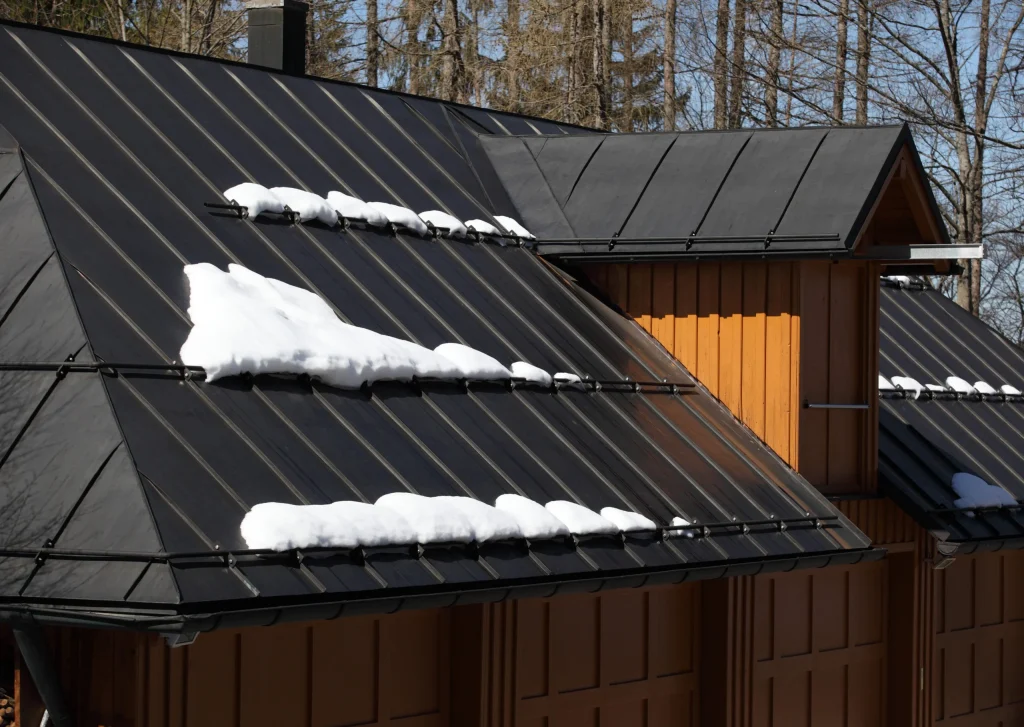Ice dams are a common problem during the winter season in regions with cold climates. Homeowners often worry about the formation of ice dams on their roofs and the potential damage they can cause. While ice dams are typically associated with traditional asphalt shingle roofs, many people wonder if they can also form on metal roofs. In this article, we will explore the factors that contribute to ice dam formation and whether metal roofs are susceptible to this issue.

Understanding Ice Dams:
Before diving into the topic, let’s first understand what ice dams are. Ice dams are ridges of ice that form along the eaves of roofs, preventing the proper drainage of melting snow and ice. They occur when warm air from the attic melts the snow on the upper portion of the roof, which then refreezes when it reaches the colder eaves. Over time, the ice buildup can cause water to back up under the shingles, leading to leaks, water damage, and potential structural issues.
Factors Contributing to Ice Dam Formation:
Several factors contribute to the formation of ice dams, including temperature variations, insulation, ventilation, and roof pitch. While metal roofs are known for their durability and resistance to various weather conditions, they are not entirely immune to ice dam formation.
Temperature Variations and Metal Roofs
Temperature variations play a significant role in ice dam formation. Metal roofs, due to their high thermal conductivity, can quickly transfer heat from the interior of the house to the roof’s surface. This can cause the snow to melt faster, increasing the risk of ice dams forming. However, the same conductivity that facilitates heat transfer can also work in favor of metal roofs by allowing the heat from the sun to melt the snow more rapidly, minimizing the chances of ice dams.
Insulation and Ventilation
Proper insulation and ventilation are crucial for preventing ice dams on any type of roof, including metal roofs. Adequate insulation helps maintain a consistent temperature throughout the attic, reducing the potential for snow to melt and refreeze on the roof’s edges. Good ventilation allows for the escape of warm air and helps keep the roof surface colder, minimizing the conditions conducive to ice dam formation. When a metal roof is installed with proper insulation and ventilation, the likelihood of ice dams decreases significantly.
Roof Pitch and Ice Dams
The pitch or slope of a roof is another factor to consider. Metal roofs often have steeper pitches, allowing snow to slide off more easily. This characteristic helps prevent the accumulation of snow and ice, reducing the chances of ice dam formation. However, in certain situations where the snow melts and refreezes quickly, even a steeper roof pitch may not completely eliminate the risk of ice dams.
Conclusion:
In conclusion, while metal roofs are generally more resistant to ice dams than traditional asphalt shingle roofs, they are not entirely immune to this issue. Temperature variations, insulation, ventilation, and roof pitch all play a role in determining whether ice dams will form. It is crucial for homeowners with metal roofs to ensure proper insulation, ventilation, and roof design to minimize the risk of ice dams. Regular maintenance and prompt removal of accumulated snow can also help prevent the formation of ice dams and protect the integrity of the roof.
So, can ice dams form on metal roofs? Yes, they can, but with the right precautions and proactive measures, homeowners can significantly reduce the likelihood of ice dam formation and potential damage to their metal roofs.



Leave a Reply